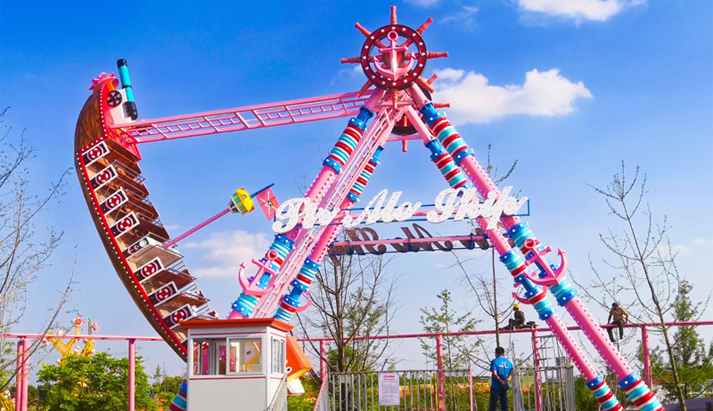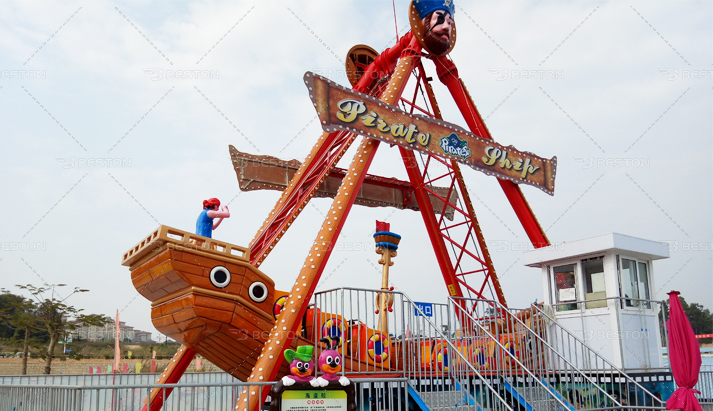Adding a pirate ship ride to your amusement park can be an exciting and profitable decision. Pirate ship rides have a timeless appeal that draws visitors of all ages, and they can become a signature attraction for your park. However, selecting the right pirate ship ride for sale in the Philippines requires careful consideration to ensure safety, profitability, and overall guest satisfaction. In this guide, we’ll explore the key factors to consider when choosing a pirate ship ride for your amusement park.
1. Space and Location
Before you start browsing for pirate ship rides, assess the available space in your amusement park. Pirate ship rides come in various sizes, so it’s crucial to determine the dimensions of the ride and the area required for its operation, including safety zones and queue lines. Additionally, consider the ride’s location within the park. It should be easily accessible, visible, and well-integrated into the overall park layout to maximize its appeal.
2. Capacity and Throughput
The capacity of the pirate ship ride is essential to meet the demands of your park’s visitor traffic. Consider how many riders the ride can accommodate per cycle and how quickly it can load and unload passengers. High throughput is crucial to keep queue times manageable, especially during peak seasons. Ensure that the ride’s capacity aligns with your park’s expected attendance.
3. Age and Height Restrictions
Determine your target audience and demographic when selecting a pirate ship ride. Different pirate ship rides may cater to specific age groups, from family-friendly options suitable for children to more intense rides designed for thrill-seekers. Additionally, check if the ride has height or weight restrictions to ensure it can accommodate a wide range of visitors.
4. Ride Theming and Aesthetics
Pirate ship rides often come with various themes and aesthetics. Choose a theme that aligns with your park’s overall atmosphere and branding. The ride’s visual appeal, including its colors, decorations, and overall design, can significantly impact its popularity and draw visitors in. Consider whether you want a traditional pirate ship look or a more modern, stylized design.
5. Ride Motion and Experience
Pirate ship rides offer different motion experiences. Some swing gently back and forth, providing a mild and family-friendly experience, while others swing more aggressively, delivering a thrilling and adrenaline-pumping ride. The type of experience you choose should align with your park’s target audience and overall theme. A diverse range of ride experiences can cater to a broader audience.

6. Safety Features and Compliance
Safety is paramount when selecting any amusement park ride. Ensure that the pirate ship ride you choose complies with all safety standards and regulations in your region. Look for rides for the Philippines amusement park from https://amusementrides.ph/ with advanced safety features, including harnesses, restraints, and emergency shut-off systems. Regular maintenance and inspections are also essential to keep the ride in optimal condition and ensure rider safety.
7. Manufacturer Reputation
Research the reputation of the manufacturer or supplier of the pirate ship ride. Established manufacturers with a track record of producing safe and reliable rides should be a top consideration. Read reviews, seek recommendations from industry experts, and request references from other amusement park operators who have purchased rides from the same manufacturer.
8. Ride Accessibility and Inclusivity
Make sure the pirate ship ride is accessible to all park visitors, including those with disabilities. Consider incorporating features like accessible boarding platforms, secure restraints, and clear instructions for ride operators to assist guests with special needs.
9. Maintenance and Operating Costs
Evaluate the long-term costs associated with owning and operating the pirate ship ride. This includes maintenance, staffing, energy consumption, and insurance. Factor these expenses into your budget to ensure the ride remains profitable over its lifespan.
10. Return on Investment (ROI)
Calculate the potential ROI for the pirate ship ride. Consider factors like ticket pricing, expected ridership, and additional revenue streams such as merchandise and photo sales. A well-placed and popular pirate ship ride can provide a substantial return on your investment, but it’s essential to make informed financial projections.
11. Theming and Storytelling
Consider incorporating storytelling and theming elements into the pirate ship ride experience. A well-developed theme can enhance rider immersion and create a memorable adventure. This might include pirate costumes for ride operators, thematic music, and even pre-ride narratives to set the scene.
12. Guest Feedback and Testing
Before finalizing your choice, gather guest feedback and conduct ride testing if possible. Ask for opinions from focus groups or conduct surveys to gauge potential riders’ interest and preferences. Testing the ride with park staff can also help identify any operational or safety concerns before opening it to the public.
13. Budget Considerations
Last but not least, carefully evaluate your budget and financial capabilities. Keep in mind that the initial purchase cost is just the beginning. Budget for ongoing expenses, marketing efforts, and any unforeseen maintenance or repair costs.
In conclusion, choosing a pirate ship ride for your amusement park requires a thorough evaluation of various factors, from space and theming to safety and ROI. By carefully considering these factors and conducting thorough research, you can select the perfect pirate ship ride that not only delights your visitors but also contributes to the long-term success of your park.

